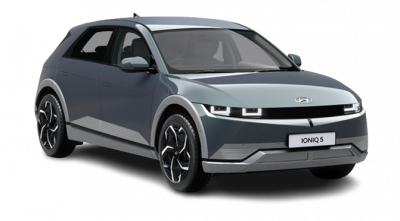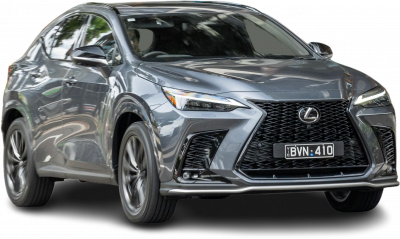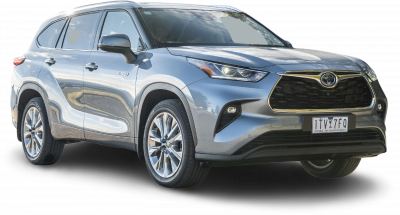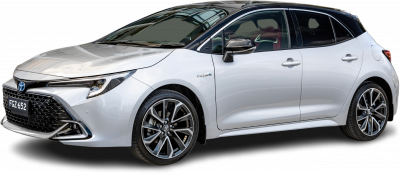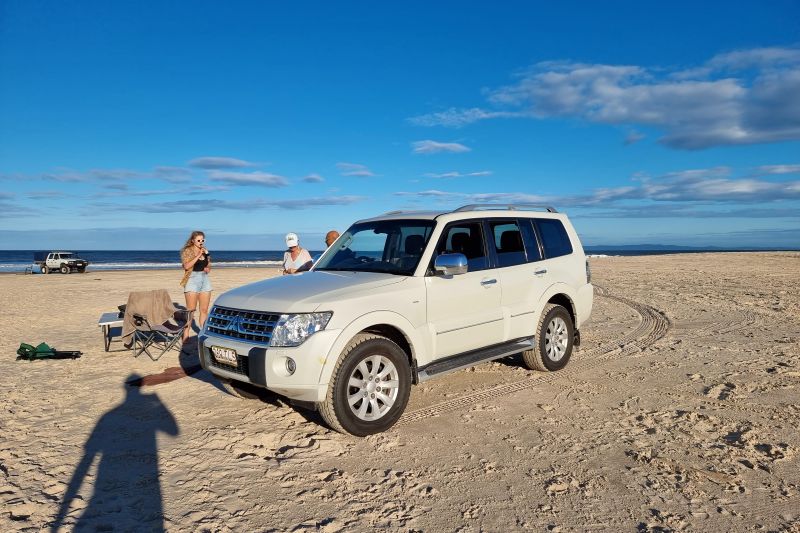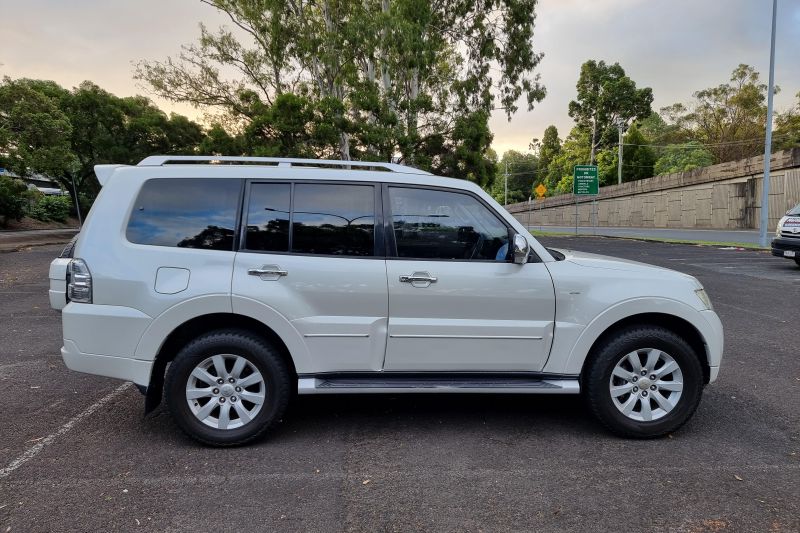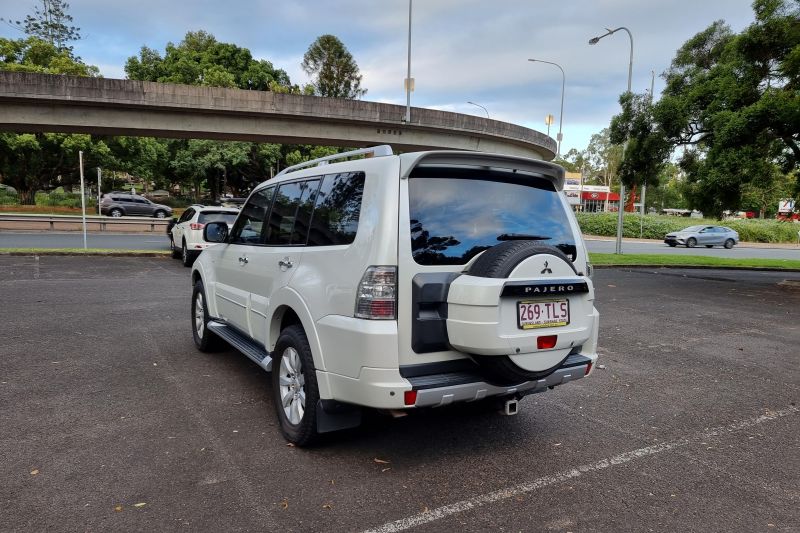About the Mitsubishi Pajero
Chris M purchased this Mitsubishi Pajero used for $17,500 (including all on-road costs) in 2021. Chris M would buy this car again because: “I’ve always wanted a Pajero. Whether because of the marketing when I was a young impressionable lad or the solid, square looks, or maybe I just have a thing for underdogs in the world of Patrols and LandCruisers. The Pajero managed to be a pretty perfect mixture of off-road capability and on road civility for our weekend camper lifestyle.
We previously had a Pajero Sport we purchased new for three years, and while that car was perfectly competent and we had no issues throughout the ownership duration, we didn’t love it. So when COVID hit and we were able to sell the car without any financial penalties, we took the opportunity to look for the car that we cross shopped the Pajero Sport against (and originally decided against due to old technology), the original Pajero.
Buying the Pajero used was a process I never wish to undertake again. At the height of the COVID price inflation, every Pajero was being sold at well over what we thought it’s worth, and the ones we did try had significant mechanical issues that I, as someone who doesn’t know the difference between a wrench and a spanner, wasn’t willing to tackle.
Months went by as we looked everywhere for our ideal Pajero, but nothing came of it. I’d given up on the idea, until finally, one Friday afternoon, I took a quick look on CarSales and saw this pristine, 2011 Pajero Exceed petrol, 175,000km on the clock at a very reasonable price just one suburb from me.
Owned by a very nice gentleman, it was love at first sight for us, so much so I asked my missus to do the negotiations as I was too nervous to barter… It was absolutely perfect for us. “
How reliable has your car been? Tell us about any issues.
We actually only ended up owning the car for less than a year for reasons I’ll go into later, but in that time, the car was absolutely faultless.
Everything worked as intended, the big 3.8L 6G75 engine was purring away softly in the background. We took it on a few off road trips to Bribie and Rainbow Beach, and it performed flawlessly. The only thing that I did to the car was give it a good detail and clean up the foggy headlights.
The engine does have a timing belt, but it’s just a solid, well built car that we really enjoyed in our short time together.
What do you think of the ownership experience with your car?
Call me a fan of the brand, but I think most Mitsubishis are criminally misunderstood. I tell people the least reliable thing in a Mitsubishi is the owner, and in my experience with the Pajero, our old Pajero Sport, and the Magnas we’ve had in the family, that still rings true.
However, I’d definitely describe the Mitsubishi dealer experience as ‘No Frills’. The coffee is from a coffee machine rather than barista made, the TV in the lounge is from the 2000s and it’s definitely not the atmosphere of sophistication and luxury like the Euros or Lexus, but that is just the way I like it.
Oil changes and parts are cheap and readily available, mods are easy and varied in selection, and if it wasn’t for a few very niche things, we’d definitely still have the Pajero.
Are you happy with the price and features of your car?
One of the reasons we didn’t purchase a new Pajero was because of the price and features. At $60k new, the Pajero Exceed was not particularly competitive with the Pajero Sport GLS we ended up with for $44k, nor the Prado GXL that was available for $63k.
For a new car, it was lacking any autonomous safety features, no adaptive cruise etc…
For a second hand car though, at this price? It’s fantastic. It came with heated and power seats, a decent Rockford Fosgate sound system, a rear DVD player we’ll never use and satellite navigation that we’ll never use.
The interior appointments are good in quality and presentation, although the actual dash itself has an awful tendency to rattle on corrugations and bumpy roads (that apparently is fixable).
The headlights on the Exceed model are also pretty fantastic for a car from the early 2010s. Once you add smartphone mirroring, the car would be pretty similar to a 2020s Pajero which is a great thing for us, but not so great for new car shoppers.
What do you think of the performance and economy of your car?
Ohhhhhh it’s bad…
Let me elaborate. The performance of the car is actually very good. I have a reasonable amount of experience with V6s of this era from the mainstream brands, from the Toyota 2GR to the Holden Ecotecs and Alloytecs, and the Mitsi unit in the Pajero actually sounds better than any of them.
It goes reasonably well too, able to keep up with traffic around town and on the freeway. Mitsubishi’s transmission has always been quite good, on steep descents it’ll downshift aggressively to maintain the desired speed, and it’s pretty intuitive in providing smooth or aggressive upshifts depending on the throttle application.
So what’s the bad part? The economy. The Pajero enjoys a trip to the petrol bowser about as much as a tradie enjoys a trip to KFC. The absolute best I managed on the car was 12L/100km, and that was on a smooth freeway at 100km/h.
Typical usage would be close to 15L/100, and around town expect upwards of 17. I came in with the expectation that the economy would be quite similar to a petrol Prado at 12 to 13L/100 combined, but this was the singular worst element of the car and a key reason why it’s no longer in our possession.
What do you think of the technology in your car?
Tech? What tech?
Jokes aside, the Pajero doesn’t have much in the way of technology, and what technology it does have is so out of date and hard to use that it’s pointless to include it. There is native Bluetooth, but works with mobile calls only, no audio play, so we just got a cheap FM transmitter to compensate. There is no digital speedo, no AEB, lane keep, blindspot monitor or adaptive cruise, so by the standards of 2023, it’s definitely not tech laden.
There are still some good things in the cabin though. The sound system, although doesn’t compare well to the Bowers & Wilkins or Mark Levinson systems in the luxury brands, is considerably better than the stock Pajero Sport or Prado unit.
The heated seats work a treat, and even come with lumbar support. There’s even headlamp washers for the powerful headlamps. Interestingly, the Pajero comes with a separate washer reservoir for the rear wipers, rather than a combined reservoir. First time I’ve seen that in a car.
What do you think of the ride comfort and handling of your car?
Driving the Pajero is an absolute pleasure.
That’s not a sentence very often said, and I’m not about to say that now. As far as handling goes, there’s a lot of benefits to having a monocoque chassis, and the Pajero being one of the best handling 4WDs is a hill I’m pretty willing to die on.
You don’t buy a 4WD for handling though, that’s like going to Subway because you’re on a diet. Sure it’s better than the other fast food options, but it’s still not going to give you the desired effect. That’s where Mitsubishi’s choice to valiantly diverge from the standard 4WD design checklist really shows its limitations and a questionable understanding of the requirements of their target audience.
What you do gain in handling is limited by the fact that you’re in a 2.5 tonne, tall and top heavy car.
The price for that though, is worse suspension articulation, worse sound deadening and much more limited selection of modifications and upgrades compared to the Prado. The ride is stiff compared to the absolute cushion that is a Toyota Prado, and on any road, you’re constantly bombarded by a wave of tyre and wind noise.
Off road, the Pajero’s traction system works very well, it’s intuitive and able to send torque to the right wheels at the right time, but again, because of the construction, it’s limited by its wheel articulation and somewhat fighting with one hand tied behind its back.
Do you have any additional comments about your car?
I love the Pajero, and the rather short time we had with it. If we’d got this car 15 years ago when the first NS came out, it’d be one of the best 4WDs on the market, competitive in pretty much every facet against the Prado 120s, Disco 3s or Y61 Patrols of the time.
An interesting change in our situation meant we decided to do a lap of the country, living in our car full time, and for that purpose, we decided the Pajero was not the most suitable car for the task.
The petrol engine, while being very reliable and has a nice, deep roar, ended up being the car’s biggest constraint. A range of less than 500km from a 90L tank meant that we’d have to consider our trip a lot more carefully, and getting parts for a 6G75 might prove an issue in the outback that we didn’t want to try to deal with.
For all its flaws, the Pajero ended up being a very likable car. The Pajero Sport we previously had is a much more modern vehicle, and probably better in most regards.
However, the old Pajero was deeply endearing for us, to the point where we still look at it with love and fond memories. Anyway, we swapped the Pajero for its key nemesis, a Toyota Prado. Sorry Mitsubishi…




